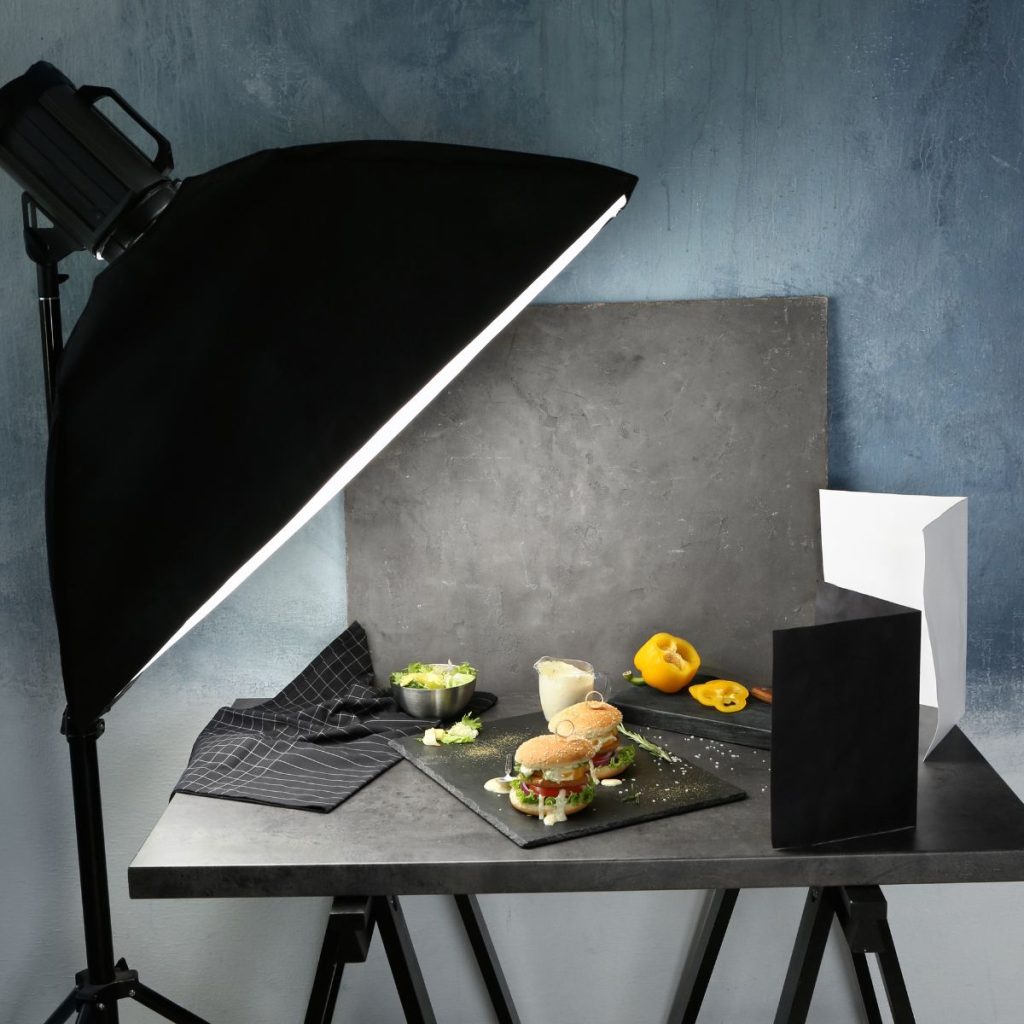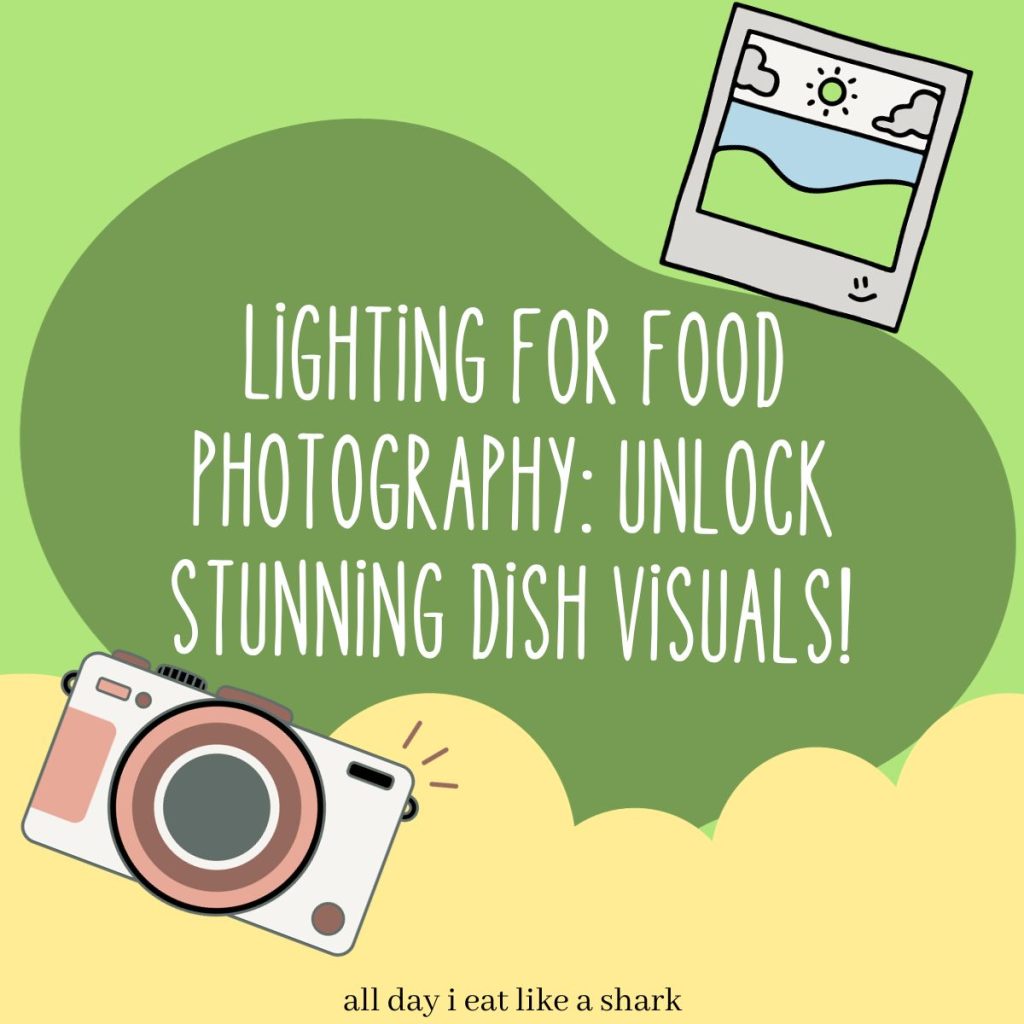Are you looking to take your food photography to the next level?
In this article, we’ll show you how to master the art of lighting for food photography.
You’ll discover the secrets to harnessing natural light, using artificial lighting techniques, and manipulating shadows and highlights to create stunning and innovative food images.
We’ll also guide you in choosing the right light source and teach you how to enhance your lighting with reflectors and diffusers.
Get ready to revolutionize your food photography with expert lighting techniques!
Understanding Natural Light
You should position your subject near a window to take advantage of the beautiful natural light. Natural light is a key element in food photography, allowing you to capture the vibrant colors and textures of your dishes.
By positioning your subject near a window, you can create soft and diffused light that enhances the visual appeal of your food.
Experiment with different angles and distances from the window to achieve the desired effect. Don’t be afraid to play with shadows and highlights to create depth and dimension in your photos.
Natural lighting for food photography provides a sense of authenticity and freshness to your images, making them more appealing to your audience. So, embrace the power of natural light and let it bring innovation to your food photography.
Manipulating Shadows and Highlights
There are several techniques you can use to manipulate shadows and highlights in your food photography.
One technique is to adjust the distance and angle of your light source. By experimenting with different light sources and their positioning, you can play with the intensity and direction of your shadows, bringing depth and dimension to your photographs.
Another technique is to use reflectors and diffusers. Reflectors and diffusers can help soften harsh shadows and control the overall lighting. They allow you to highlight specific areas of your dish and create a more balanced and visually appealing image.
Utilizing Artificial Lighting for Food Photography
To achieve optimal lighting for your food photography, consider using artificial lights in conjunction with natural light sources. Artificial lighting can provide you with more control over the intensity, direction, and color temperature of your light, allowing you to create stunning and innovative food images.
By using artificial lights, such as strobes or continuous lights, you can enhance the natural light or even create a completely artificial lighting setup to suit your creative vision.
Experiment with different lighting techniques, like backlighting or side lighting, to add depth and dimension to your food photographs.
Additionally, artificial lights can be used to fill in shadows or highlight specific areas of your composition. Don’t be afraid to push the boundaries and explore new lighting possibilities to capture unique and captivating food images that stand out in a sea of visual content.

Choosing the Right Light Source
Consider using a natural light source, like a large window, in order to achieve a soft and diffused lighting effect for your food photography. Natural light brings out the vibrant colors and textures of the food, creating a more appealing and appetizing image.
By utilizing a large window, the light will be evenly distributed, reducing harsh shadows and creating a natural, organic feel. This technique is especially effective when capturing fresh produce, desserts, or dishes with intricate details.
Experiment with different angles and positions to find the best lighting for your subject. Embracing natural light not only adds a touch of authenticity to your photographs but also encourages creativity and innovation in your food styling.
Enhancing Lighting With Reflectors and Diffusers
You can easily enhance the lighting for food photography by strategically placing reflectors and diffusers. This will give you more control over the intensity and direction of the light.
Reflectors are useful for bouncing light onto the subject, creating highlights and reducing shadows. They can be made from materials like foam boards or aluminum foil.
Diffusers, on the other hand, soften and diffuse harsh light, resulting in a more natural and pleasing look. They can be made from materials like white fabric or translucent plastic.
Experiment with different positions and angles to achieve the desired effect. By utilizing reflectors and diffusers, you can elevate your food photography to a whole new level. This will enable you to capture mouthwatering images that stand out and leave a lasting impression.
Innovation in lighting techniques can truly transform your culinary creations into works of art.




Konnichiwa! (Hello!) I'm Pat Tokuyama, a Japanese tofu cookbook author, who travels for music, food, and adventure. If you like Japanese tea, checkout some of the newestorganic japanese tea, matcha bowls and noren and more!
** Curious about the Plant Based Japanese Cooking Club? ** Learn more here!